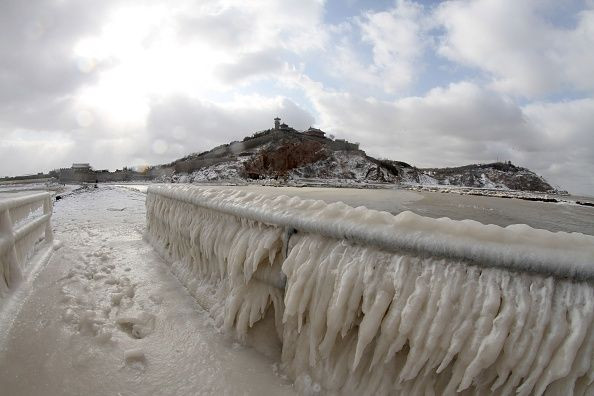What Is An Ice Tsunami? Facts To Know About The Lake Erie Phenomenon

North America has had a rough winter season. Earlier this year, the polar vortex enveloped the area in double negative temperatures and, now, a furious windstorm just sent blocks of ice surging into the shorelines of the U.S. and Canada in what many call an ice tsunami.
Citizen videos and footage from the Niagara Parks police show huge chunks of ice crashing into the shores of Lake Erie in New York on Feb. 25, with some forming walls as high as 30 feet. The ice didn’t just collide onto posts and retaining walls; they went as far as hitting lakeside homes and cluttering roads and beaches. Residents said that this phenomenon is not really new to them, though the recent episode is the largest they’ve encountered since.
According to the National Geographic, ice tsunamis have been the subject of studies since 1822. Previously called ice pushes, ice shoves, or ivu, seeing ice blocks move up shorelines due to strong winds typically happens at the start of spring. This is when winter ice begins to melt and break up, making them easier to move with force. For the latest phenomenon, winds at the Lake Erie region reportedly had speeds of up to 74 mph.
National Carolina State University GIS administrator Andrew Futrell told IFLScience that ice tsunamis are a lot similar to storm surges, only that it happens in sub-zero temperatures. The damage could also be greater, as it can run over equally solid structures. Futrell explained that the persistently strong winds forced the ice on open water to move onto land and the friction on the ground is what causes it to pile up and create a massive wave-like wall at its slows.
Residents in the area have been advised to clear the ice as soon as they can to prevent the water from seeping into their homes and damaging the integrity as it melts. Those living close to the share have also been told to evacuate for their safety.
© Copyright IBTimes 2024. All rights reserved.




















